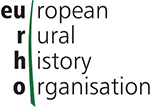General
Romania is a country at the crossroads of Central, Eastern and South-Eastern Europe. Its territory stretches on both sides of the axis of the Carpathian Mountains, is located north of the lower course of the Danube River and has an outlet to the Black Sea. Romania is the twelfth largest and sixth most populous country in the European Union. Bucharest is the country’s capital and largest city (about 1.9 million inhabitants). The modern Romanian state dates back to 1859, gaining his independence in 1877/1878. Romania is a member of NATO (since 2004) and of the European Union (since 2007).
The country enjoys outstanding natural beauty and diversity and has a rich cultural and historical heritage. The oldest traces of settlement on the present-day territory of Romania date back to the Lower Paleolithic. The variety of its historical regions brings together mainly ethno-socio-cultural traditions specific to the Balkans and Central-South-Eastern Europe, as well as, in part, those of the Eastern Slavs and Turco-Tatar populations. Among the most representative natural and cultural-historical sites and complexes in Romania are the Danube Delta and the nature reserves in the Carpathian Mountains, ancient Greek settlements and fortifications on the Black Sea coast, the Dacian fortresses in the Orăștiei Mountains, the Roman sites of the Dacia Province, the fortresses and noble curias of Transylvania, the settlements and fortified churches of the Transylvanian Saxons, the painted churches and monasteries of northern Moldavia and the wooden churches of Maramureș.
https://whc.unesco.org/en/interactive-map/?search=&id_states=ro
https://www.mae.ro/node/1614 (Romanian language)
Transylvania (LAT: Partes Transsilvaniæ, HU: Erdély, GE: Siebenbürgen) means "Land beyond the forest" and it is historically attested for about a thousand years. It is a geographical area and cultural-historical province in central Romania, bordered to the west, east and south by the Carpathian Mountains. The region has an area of approx. 57,000 km2 and a population of approx. 6.8 million inhabitants. Throughout history - in whole or in part - it has been part of the Dacian Kingdom, the Roman Empire (Province of Dacia), the Kingdom of Hungary, the Principality of Transylvania, the Habsburg Empire and the Austro-Hungarian Dualist Monarchy. Since 1918, the region has been part of Romania. The city of Alba Iulia (HU: Gyulafehérvár, GE: Weißenburg/Karlsburg) is considered the historical capital of the province. Transylvania has been populated over the centuries by a variety of ethnic groups: Romanians, Hungarians, Saxons and Austrians, Armenians, Jews, Roma, Greeks, Slovaks, Poles, Ukrainians, etc. The majority of the current population is made up of Romanians (about 70%) and Hungarians (about 18%). The specificity of Transylvanian civilization is mainly represented by the meeting of the cultural heritages of Romanians, Hungarians and Saxons. Transylvania’s demographic and cultural diversity is matched by its religious diversity. Predominantly Christian, the inhabitants of Transylvania still maintain numerous religious communities: Orthodox, Roman Catholic, Greek Catholic, Calvinist Reformed, Evangelical Lutheran and Unitarian Reformed.
https://www.lonelyplanet.com/articles/ten-things-you-need-to-know-before-visiting-transylvania
https://www.tripadvisor.com/Tourism-g317135-Transylvania-Vacations.html
The municipality of Cluj-Napoca (LAT: Castrum Clus/Claudiopolis, HU: Kolozsvár, GE: Klausenburg) is located in north-western Transylvania. It is the second largest city in Romania, with a population of about 325,000 inhabitants. Cluj has the oldest academic tradition in present-day Romania (since the 16th century) and is today the country’s largest university center, hosting almost 100,000 students.
The place name Clus is attested in the 12th century, and the settlement became a royal town in 1316. Unlike the other urban centers of the Hungarian Kingdom (founded by Germanic settlers), Clus was the only medieval town to develop from its early days as a dual Hungarian-German demographic and social structure. In the 16th-17th centuries, Cluj reached the peak of its development, and was known at the time as the "treasure-city" (civitas primaria) of Transylvania. In the pre-modern and modern periods, the city was the most important Hungarian cultural center of Transylvania. In the last hundred years, Cluj has established itself as one of Romania’s most developed and dynamic academics, cultural and economic centers.





